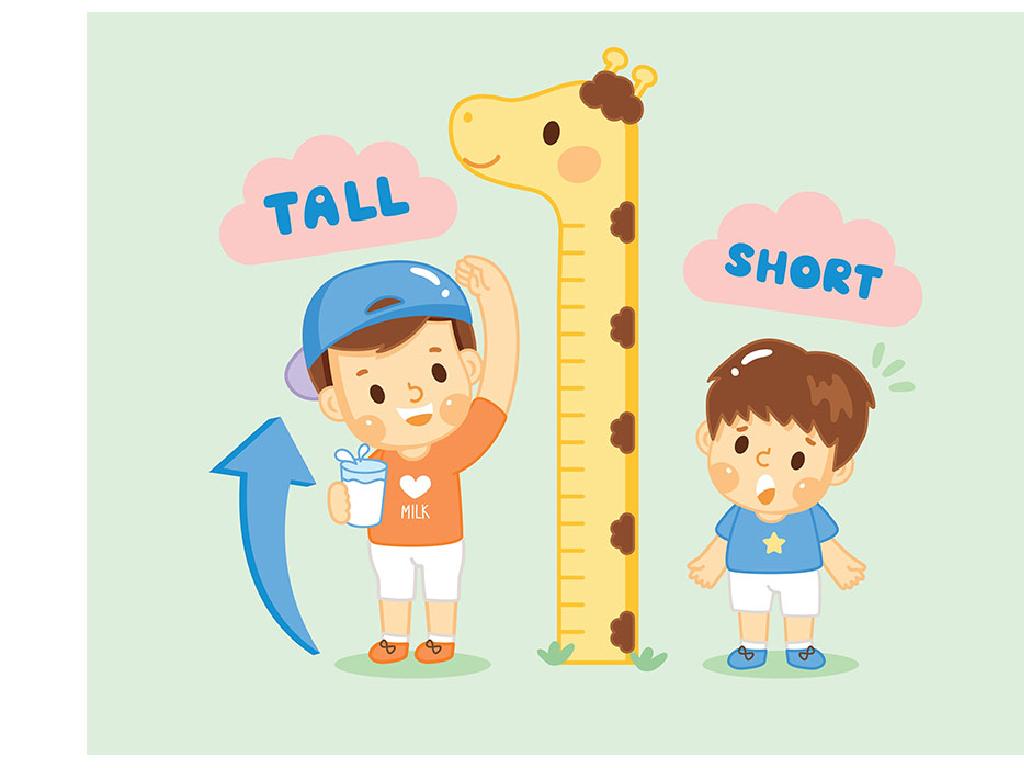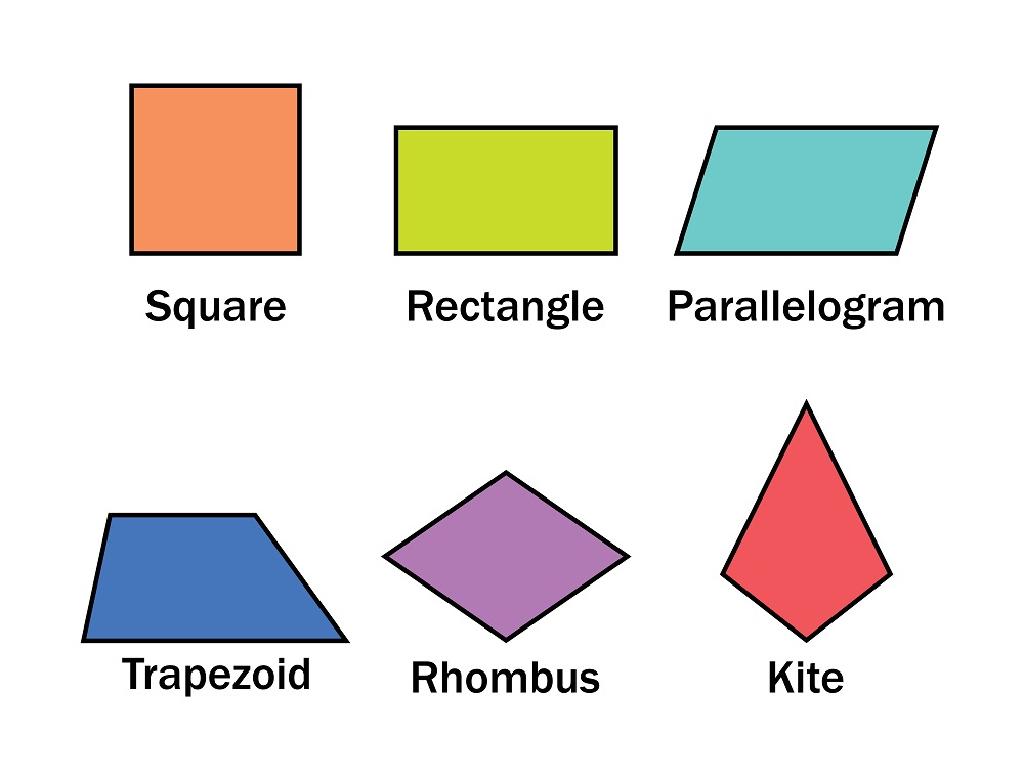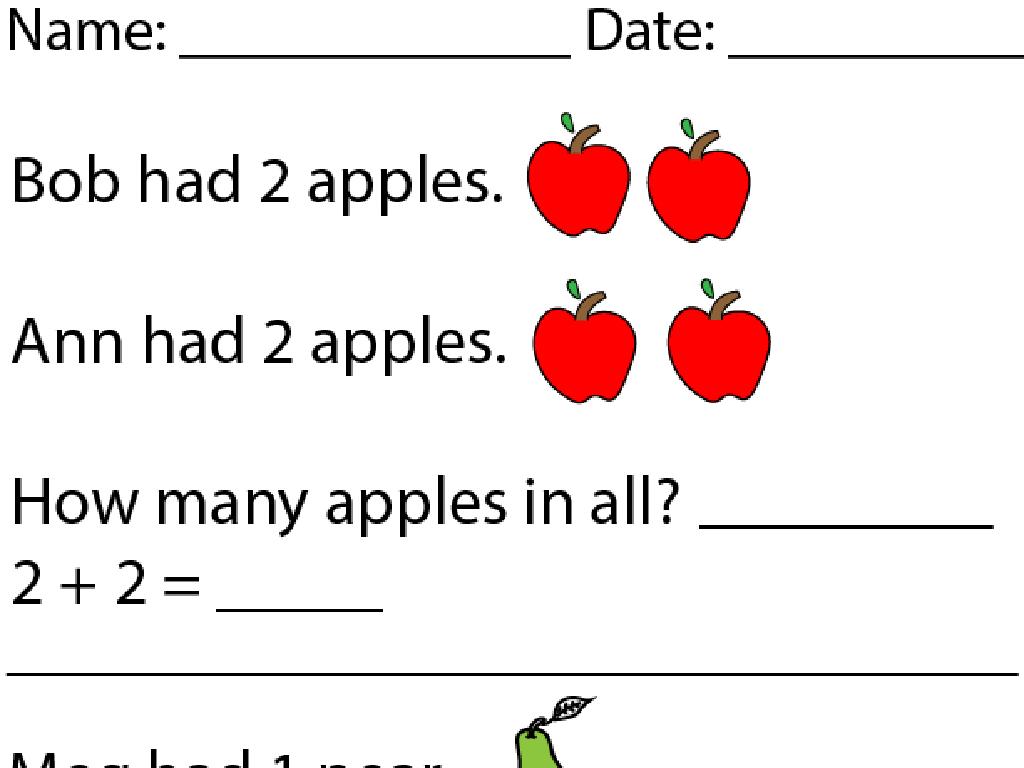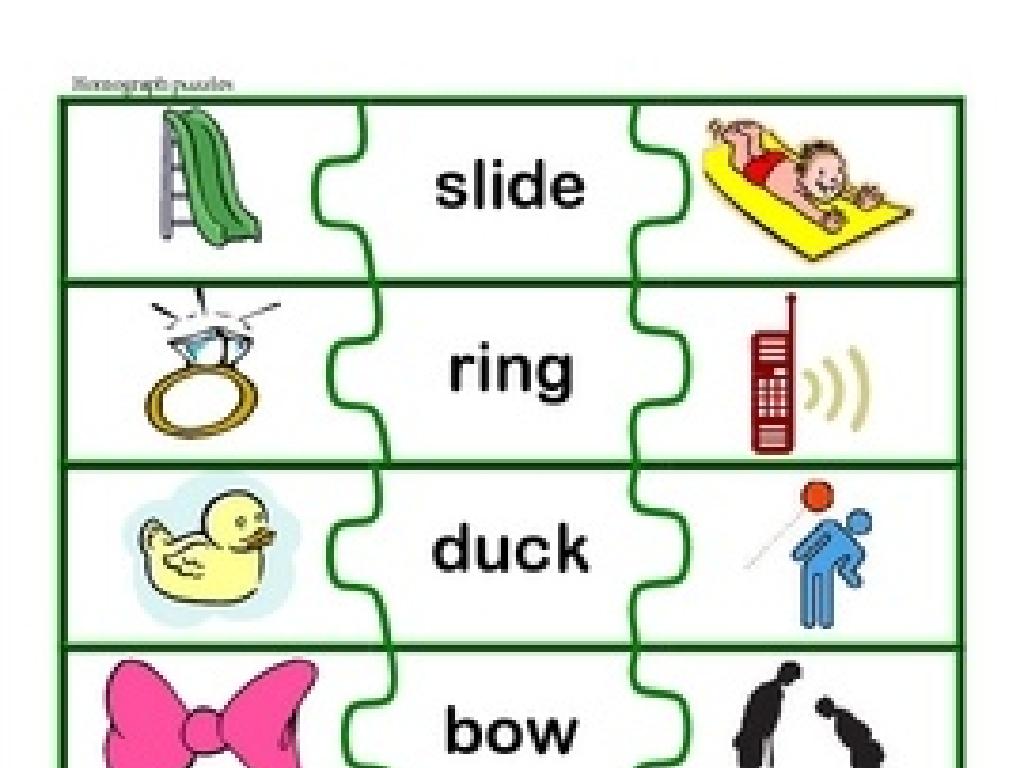Measure Using An Inch Ruler
Subject: Math
Grade: Fourth grade
Topic: Customary Units Of Measurement
Please LOG IN to download the presentation. Access is available to registered users only.
View More Content
Measuring with an Inch Ruler
– Explore ways to measure objects
– Learn about customary units
– Units like inches, feet, and yards are used in the U.S.
– Focus on inches with a ruler
– Understand inch marks on the ruler
– Practice measuring items
– Use a ruler to measure books, pencils, etc.
|
This slide introduces students to the concept of measurement and the customary units commonly used in the United States, such as inches, feet, and yards. Emphasize the importance of understanding different ways to measure objects and how to accurately use an inch ruler. Show the students a ruler and point out the inch marks, explaining that each number represents one inch. Have various classroom items ready for the students to measure, such as books, pencils, and paper, to give them practical experience with measuring. Encourage them to estimate before measuring to develop their estimation skills. This hands-on activity will help solidify their understanding of using an inch ruler to measure objects.
Understanding the Inch
– Origin of the inch
– Derived from the width of a thumb, used in ancient times.
– Today’s definition of an inch
– An inch is officially 2.54 centimeters.
– Examples of one-inch items
– A paperclip, a quarter’s edge, or a large button.
– Measuring with an inch ruler
– Practice measuring items with a ruler to see what an inch looks like.
|
This slide introduces students to the concept of an inch, a fundamental unit of length in the customary system. Begin with a brief history, explaining that the inch was originally based on the width of a human thumb. Today, it is standardized to 2.54 centimeters. Provide relatable examples of common objects that are approximately an inch long to help students visualize the measurement. Encourage students to bring items from home that they believe measure about an inch and use rulers in class to measure them. This will help solidify their understanding of the size of an inch and how to use a ruler to measure it.
Reading an Inch Ruler
– Understand inches and fractions
– An inch is divided into smaller parts, like 1/2, 1/4, etc.
– Learn to read ruler marks
– Each mark on the ruler represents a fraction of an inch
– Practice measuring lengths
– Use objects to measure and record their lengths
– Identify lengths to nearest ½ inch
– Look for the mark closest to the object’s end without going over
|
This slide introduces students to the basics of using an inch ruler, including understanding the divisions of inches into fractions and how to read the marks on the ruler. Start by explaining the parts of an inch and how each mark on the ruler corresponds to a fraction. Then, move on to hands-on practice where students measure various objects to the nearest inch and half-inch, recording their findings. Encourage students to estimate before measuring to develop their intuition for length. Provide a variety of objects for them to measure, ensuring they understand how to align the ruler and read the measurement accurately.
Measuring Objects with an Inch Ruler
– Steps to measure with a ruler
– Place the ruler’s end at the object’s edge. Read the number at the other edge.
– Tips for accurate measurements
– Ensure the ruler is straight, start at zero, and check the unit.
– Class activity: Measuring desk items
– Find objects on your desk to measure. Write down their lengths in inches.
|
This slide introduces students to the practical application of using an inch ruler for measurement. Begin with a demonstration of how to properly align the ruler with the object being measured, emphasizing the importance of starting at the zero mark. Discuss common mistakes and how to avoid them, such as not laying the ruler flat or starting from 1 instead of 0. For the class activity, have students find various items on their desks to measure, such as pencils, erasers, or small notebooks, and record their lengths. Provide guidance on how to read the ruler to the nearest inch and encourage students to double-check their measurements. Offer several examples of items to measure and suggest they compare results with a partner to reinforce the concept of accurate measurement.
Estimating Lengths in Inches
– Understanding estimation
– Estimation is a smart guess of quantity
– Estimating lengths in inches
– Use objects you know the size of for comparison
– Group activity: Estimate and measure
– Measure items like books, pencils, and desks
– Discussing estimation accuracy
|
This slide introduces the concept of estimation, which is a valuable skill for making quick, reasonable guesses about measurements when precision is not crucial. Teach students that estimation is not about finding the exact measure but about making an educated guess. Show them how to use familiar objects (like the width of a finger, which is approximately an inch) to estimate lengths in inches. For the group activity, have students work in small teams to estimate the length of various items in the classroom before using a ruler to measure them. Afterward, discuss as a class why their estimates were more or less than the actual measurements. This will help them understand the practicality of estimation and improve their ability to gauge lengths in inches.
Real-World Applications of Measurement
– Importance of accurate measurement
– Accurate measurement is crucial for fitting, building, and creating items correctly.
– Rulers in professional use
– Tailors measure for perfect clothing fit; carpenters measure for exact cuts.
– Architects’ precision with rulers
– Architects use rulers to draw precise plans, ensuring buildings are structurally sound.
– Discuss personal ruler use experiences
|
This slide aims to show students the importance of measuring accurately in various real-world scenarios. Emphasize that without precise measurement, tailors couldn’t make clothes that fit well, carpenters couldn’t cut wood to build sturdy furniture, and architects couldn’t design safe buildings. Encourage students to think about and discuss times they’ve seen someone use a ruler outside of school, such as during a home renovation or while sewing a piece of clothing. This will help them connect the concept of measurement with practical, everyday activities and understand its value in different professions.
Class Activity: Measurement Collage
– Measure objects with an inch ruler
– Cut paper to match measurements
– Create your measurement collage
Use your creativity to arrange the cut pieces
– Share collages with the class
Explain your choices and learn from others
|
This hands-on activity is designed to help students practice measuring objects using an inch ruler and apply their knowledge in a creative way. Provide a variety of objects for students to measure. They should then cut out strips of paper that correspond to the length of the objects they’ve measured. Once they have their measured strips, students will create a collage on a piece of construction paper, arranging the strips in a creative pattern or design. After completing their collages, students will share their artwork with the class and discuss the different lengths they measured. Encourage students to explain their creative process and what they learned about measurement. Possible variations of the activity could include measuring classroom items, personal items, or even bringing items from home that hold personal significance to measure and include in their collage.
Review and Quiz: Measuring with an Inch Ruler
– Recap today’s key measuring points
– Remember how to line up the ruler and read the inch marks.
– Take a quiz to test your ruler skills
– Show what you’ve learned about using an inch ruler.
– Homework: Measure 5 home objects
– Guess the length, then use your ruler to check accuracy.
|
This slide is designed to consolidate the students’ knowledge of using an inch ruler for measurement. Begin with a brief review of the key points from the lesson, ensuring that students recall how to properly align the ruler and read the measurements. Follow up with a short quiz to assess their understanding and application of the concepts taught. For homework, students are tasked with finding five objects around their home, estimating their length, and then using an inch ruler to measure and record the actual lengths. This activity will reinforce their measuring skills and help them appreciate the practical application of measurement in everyday life. Encourage students to share their findings in the next class to foster a collaborative learning environment.






